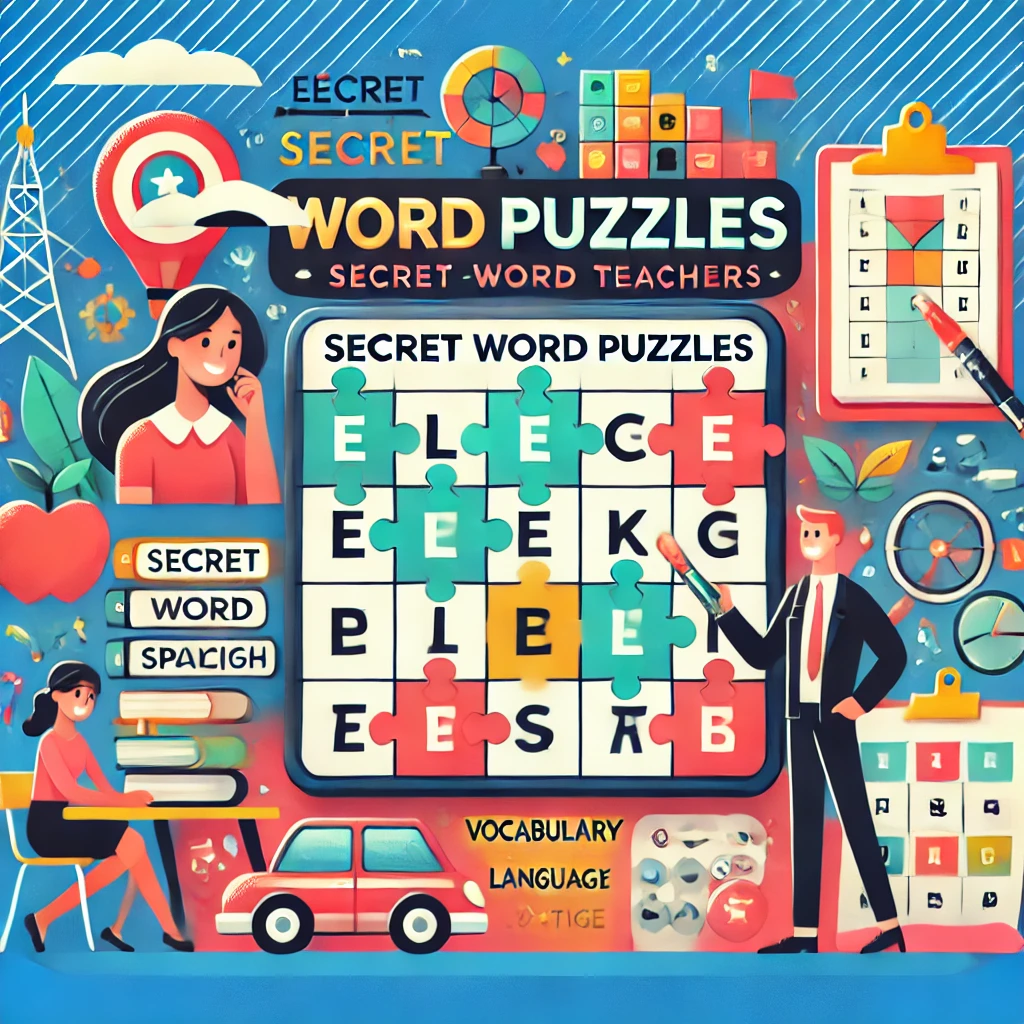Teaching languages effectively involves more than just memorizing vocabulary or grammar rules; it requires activities that engage students and make learning enjoyable. Secret Word Puzzles provide an interactive way to practice language skills, combining fun with critical thinking to enhance retention and understanding. For bilingual students or those learning English as a second language (ESL), these puzzles offer unique opportunities to practice vocabulary, spelling, and even cultural concepts.
In this article, we’ll explore how language teachers can use Secret Word Puzzles to make learning engaging and effective.
What Are Secret Word Puzzles?
Secret Word Puzzles challenge students to uncover a hidden word or phrase by solving clues. These puzzles come in three engaging formats:
- Criss Cross: Words intersect like a crossword, but the final goal is to decode the hidden word.
- Grid: Students solve clues to fill a non-interlocking grid, revealing the secret word.
- Column: Words fill vertical columns, and the final word appears in a designated column.
Each format offers distinct challenges, making them versatile tools for language instruction.
Benefits of Secret Word Puzzles for Language Learning
1. Engaging and Interactive
Secret Word Puzzles transform traditional vocabulary drills into exciting challenges. Students enjoy the game-like format, which keeps them motivated and eager to learn.
2. Reinforces Vocabulary and Grammar
Clues can be tailored to include definitions, synonyms, antonyms, or example sentences. This reinforces word meanings and grammatical usage in context, deepening understanding.
3. Promotes Critical Thinking
Solving puzzles requires logic and deduction. Students learn to approach problems systematically, which strengthens both language and cognitive skills.
4. Customizable for Different Levels
Whether teaching beginners or advanced learners, puzzles can be adjusted in difficulty to suit the needs of your students. You can also focus on specific topics like food, travel, or professions.
5. Supports Bilingual Education
Bilingual learners can solve puzzles with clues in one language and answers in another, creating a bridge between languages. For example, an English-Spanish puzzle might use Spanish clues to teach English vocabulary.
How to Use Secret Word Puzzles in Language Classes
1. Introduce New Vocabulary
Start lessons with a puzzle to introduce key vocabulary. For example, a travel-themed puzzle might include words like “passport,” “itinerary,” or “reservation.”
2. Reinforce Previous Lessons
Use puzzles as a review tool to revisit words or phrases taught in previous sessions. This helps students retain and apply their knowledge.
3. Encourage Collaboration
Have students work in pairs or groups to solve puzzles. This fosters teamwork and encourages communication in the target language.
4. Assign as Homework
Puzzles are excellent for homework, giving students a fun way to practice outside the classroom. They’re easy to print or share digitally.
Real-World Applications
1. Bilingual Clues
Create puzzles where the clues are in one language and the answers in another. This is particularly effective for ESL learners who need to practice translation skills.
2. Grammar Practice
Design puzzles with grammar-focused clues, such as verb conjugations or sentence completion tasks. For example:
- Clue: “Past tense of run”
- Answer: “ran”
3. Cultural Integration
Introduce cultural themes to teach students about the target language’s customs or history. A French-themed puzzle might include words like “baguette” or “Eiffel Tower.”
Tips for Language Teachers
1. Use Puzzle Maker Pro
Creating puzzles is quick and efficient with tools like Puzzle Maker Pro. You can customize Criss Cross, Grid, and Column puzzles to match your lesson plans and vocabulary lists.
2. Align Puzzles with Goals
Ensure puzzles align with your teaching objectives, such as introducing new words, practicing spelling, or reinforcing grammar concepts.
3. Incorporate Audio or Visual Clues
For advanced learners, add an auditory or visual element. For example, provide a picture or play a short audio clip as the clue.
4. Track Progress
Use puzzles to assess students’ progress. Their ability to solve clues and uncover the secret word provides valuable insights into their strengths and areas for improvement.
Conclusion
Secret Word Puzzles are a dynamic and versatile tool for language teachers. By incorporating them into lessons, educators can make vocabulary practice more engaging, effective, and enjoyable. From bilingual learners to ESL students, these puzzles offer a fresh approach to mastering language skills.
Ready to transform your language lessons? Learn how Puzzle Maker Pro can help you create professional puzzles effortlessly. Explore the Secret Word Criss Cross, Secret Word Grid, and Secret Word Column modules to find the perfect format for your class. can help you create professional puzzles effortlessly.

